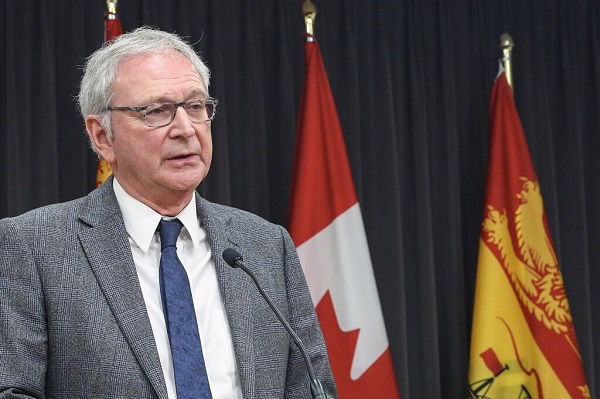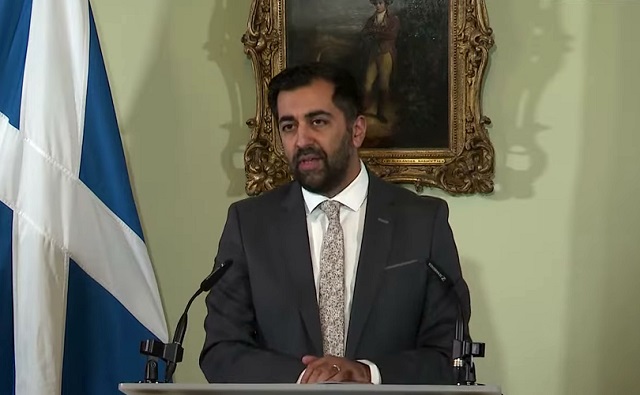Alberta
Massive funding boosts kick off Alberta’s transition to fully comprehensive care
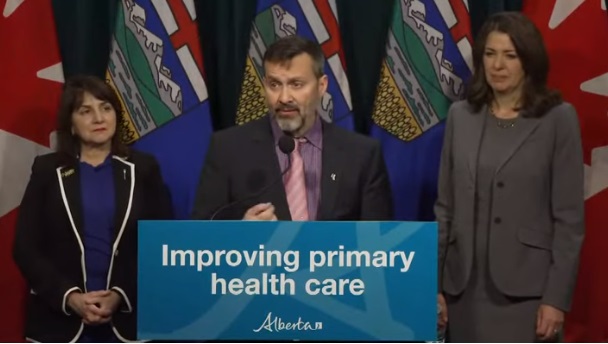
Dr. Paul Parks, president, Alberta Medical Association
Canada signs more than $1 billion bilateral agreement with Alberta to improve health care over three years
From: Health Canada
This investment will increase access to a primary health provider, reduce wait times for mental health services, and provide greater access to health data.
Canadians want and deserve a health care system that provides timely access to health services whenever and wherever they are needed. That is why the Government of Canada is investing over $200 billion over 10 years, which includes $25 billion for tailored bilateral agreements with provinces and territories, to support the Working Together to Improve Health Care for Canadians plan.
Today, the Honourable Mark Holland, Canada’s Minister of Health, and the Honourable Adriana LaGrange, Alberta Minister of Health, announced a bilateral agreement to invest $1.06 billion over the next three years, marking a crucial step in a 10-year plan for collaboration. This includes $285 million per year in new funding by the Government of Canada and continuing $70 million per year in previously-announced mental health and substance use funding, which will help accelerate efforts already underway in Alberta to improve health care access and services.
Through this federal funding, Alberta has a three year action plan to deliver improvements to its health care system by 2026, including:
- Increasing access to primary care providers for Albertans and reducing emergency department visits that could have been addressed by a family medicine office. This will be achieved by expanding team-based care and enhancing virtual care, and increasing the number of appointments available to patients.
- Funding community providers to increase diagnostic imaging capacity in the province, reducing wait times for CT scans and MRIs.
- Improving patient care by enhancing Albertans’ ability to access digital health services and their own health information by implementing e-referral services and accelerating the secure exchange of data across the health system.
- Expanding integrated services for youth mental health services in the province through school-based and community day programs, and offering more supports for youth with complex needs as they transition into adult services.
- Reducing median wait times for community mental health and substance use services by establishing new and improving existing treatment spaces, along with prioritizing culturally appropriate Indigenous community supports.
- Ensuring that First Nations and Métis people have access to high-quality, culturally safe care that meets their unique health needs. This will be achieved through dedicated funding for initiatives to enhance access to primary care in Indigenous communities, and funding for communities to develop health workforce capacity and infrastructure to improve the collection and use of health information and data.
- Improving access to health care for underserved Albertans, including through expanded community pilots that bring testing services to rural, remote and Indigenous communities, advancing French-language health services, and greater clinical care for women.
Progress on these initiatives and broader commitments will be measured against targets which Alberta will publicly report on annually.
Through this new agreement, Alberta will improve how health information is collected, shared, used and reported to Canadians; streamline foreign credential recognition for internationally educated health professionals; facilitate the mobility of key health professionals within Canada; and fulfill shared responsibilities to uphold the Canada Health Act to protect Canadians’ access to health care that is based on need, not the ability to pay.
Recognizing the significant disparities in Indigenous health outcomes, the Government of Canada and the Government of Alberta also commit to meaningfully engage and work together with Indigenous partners to support improved access to quality and culturally appropriate health care services. Alberta’s action plan is informed by continued engagement with its Indigenous partners and recent discussions involving the federal government. All orders of government will approach health decisions in their respective jurisdictions through a lens that promotes respect and reconciliation with Indigenous Peoples.
Alberta and the federal government will continue working together to improve access to health services and deliver tangible results to all residents across the province, including responding to the needs of Indigenous and other underserved and disadvantaged populations.
Quotes
“Our government is working together with provinces and territories to get Canadians the healthcare they need. This agreement is an important step in our collaboration with Alberta to take measurable actions to transform our health care system. The funding will help improve access to primary care and create better mental health services in Alberta. Together, we will continue working to achieve better health outcomes for all Canadians.”
The Honourable Mark Holland
Minister of Health of Canada
“Mental health is health, and through this agreement, we will be working with Alberta to integrate mental health and substance use care as a full and equal part of our universal health care system. This agreement will strengthen the capacity of family health providers, reduce substance use harms, and expand virtual care for youth to improve access to quality and timely mental health care and substance use supports. Together, we must ensure that all Canadians have access to supports and services for their mental health and well-being – when they need them, wherever they need them.”
The Honourable Ya’ara Saks
Minister of Mental Health and Addictions and Associate Minister of Health of Canada
“Alberta’s government is taking a serious look at the way health care is being delivered in our province. This is why we are refocusing our health care system to ensure Albertans have access to timely care, when and where they need it. This initial funding from the federal government is a good start and will support our shared health priorities of expanding access to primary care across the province and especially in our Indigenous communities, supporting our health care workers, improving access to quality mental health, and modernizing our health systems.”
The Honourable Adriana LaGrange
Minister of Health of Alberta
“Alberta’s government is supporting Albertans to improve their mental health and recover from the deadly disease of addiction as we build out the Alberta Recovery Model and refocus our provincial healthcare system. We are doing this by increasing access to CASA Mental Health Classrooms across the province, building more bed based mental health treatment capacity for youth, and improving access to mental health and addiction treatment services in communities. This initial funding from the federal government will offer some support to these made in Alberta initiatives as we build a better system of mental health and addiction care for Albertans.”
The Honourable Dan Williams
Minister of Mental Health and Addiction of Alberta
Quick facts
- The Working Together investment includes $25 billion for tailored bilateral agreements with provinces and territories, a guaranteed 5% Canada Health Transfer (CHT) increase for the next five years—amounting to $17.5 billion—and a one time CHT $2 billion top-up to address urgent needs of emergency rooms and paediatric hospitals delivered in June 2023. Combined, these investments provide provinces and territories the flexibility to address the unique needs of their populations and geography, and accelerate health care system improvements.
- Budget 2023 outlined the Government of Canada’s plan to invest over $200 billion over 10 years, including $46.2 billion in new funding for provinces and territories, to improve health care for Canadians. Within this funding, $25 billion is allocated through tailored bilateral agreements to address the unique needs of their populations and geography in four shared health priorities:
- expanding access to family health services, including in rural and remote areas;
- supporting health workers and reducing backlogs;
- increasing mental health and substance use support; and
- modernizing health care systems with health data and digital tools.
- All provinces and territories are already making considerable investments to advance progress in all four of these priority areas, and the new federal funding is complementing and expanding those efforts.
- As part of these bilateral agreements, provinces and territories are developing action plans that outline how funds will be spent and how progress will be measured to demonstrate to Canadians that improvements are occurring in Canada’s health care system. Alberta’s initial 3-year Action Plan can be found here.
- Budget 2017 committed $11 billion over 10 years in federal funding to provinces and territories to improve access to home and community care, and mental health and addictions services for Canadians. Bilateral agreements were signed with provinces and territories to access the first six years of funding. The final four years of funding for mental health and addictions are included in the new Working Together bilateral agreements.
- The Government is also working with provinces and territories to implement a second bilateral agreement focused on helping Canadians age with dignity close to home, with access to home care or care in a safe long-term care facility. This agreement will include the remaining $2.4 billion over four years to improve access to home and community care from Budget 2017; and the $3 billion over five years for long-term care from Budget 2021 to apply standards of care in long-term care facilities and help support workforce stability.
———-
From the Province of Alberta
This funding will be an essential transitional step to ensure doctors can continue to provide this care as we rapidly transition to a funding model that supports fully comprehensive care.”
Dr. Paul Parks, president, Alberta Medical Association
New funding to stabilize primary health careStabilization funding is coming soon as Alberta’s government continues working to improve primary health care across the province. The government is pulling out all the stops to stabilize, strengthen and improve Alberta’s primary health care system. Additional funding of $200 million over two years will improve access to family physicians and help ensure primary health care is available for every Albertan when and where they need it. This funding is enabled through the new Canada-Alberta Health Funding Agreement with the federal government. The agreement represents a total of approximately $1.1 billion in additional health care funding over three years for shared priorities.
Stabilization funding is an important transitional measure identified through work under the memorandum of understanding (MOU) between the minister of health and the Alberta Medical Association (AMA), signed earlier this fall. The AMA has been advocating for family physicians and rural generalists through its work under the MOU. Alberta’s government will continue to engage with the AMA as it works to develop a new, sustainable physician comprehensive care model, which will also dictate how this additional funding will be distributed. In addition to work between the government and the AMA, the Comprehensive Care Task Force will, in the new year, provide a first draft of recommendations that will include additional short-term stabilization actions to help family doctors continue to practise comprehensive care and bridge the gap until a new physician comprehensive care model is developed. These short-term actions will:
Alberta’s government is committed to finalizing a sustainable physician comprehensive care model that will address the concerns of family physicians and rural generalists and ensure Albertans can access the care they need.
Other recently announced supports for primary health care include:
Related information |
Alberta
Fortis et Liber: Alberta’s Future in the Canadian Federation

From the C2C Journal
By Barry Cooper, professor of political science, University of Calgary
Canada’s western lands, wrote one prominent academic, became provinces “in the Roman sense” – acquired possessions that, once vanquished, were there to be exploited. Laurentian Canada regarded the hinterlands as existing primarily to serve the interests of the heartland. And the current holders of office in Ottawa often behave as if the Constitution’s federal-provincial distribution of powers is at best advisory, if it needs to be acknowledged at all. Reviewing this history, Barry Cooper places Alberta’s widely criticized Sovereignty Act in the context of the Prairie provinces’ long struggle for due constitutional recognition and the political equality of their citizens. Canada is a federation, notes Cooper. Provinces do have rights. Constitutions do mean something. And when they are no longer working, they can be changed.
Alberta
30 million contraband cigarettes valued at $25 million dollars seized in Alberta
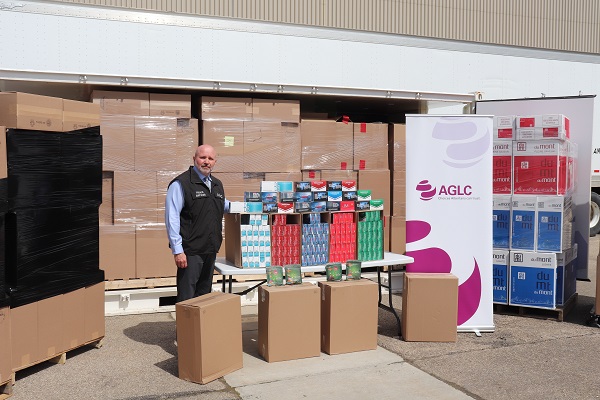
New release from Alberta Gaming Liquor and Cannabis (AGLC)
Record setting contraband tobacco seizures result from AGLC investigations
Alberta Gaming Liquor and Cannabis (AGLC) recently concluded several investigations which netted two of the largest contraband tobacco seizures in Alberta history. The combined total of the contraband tobacco seized was 154,800 cartons of contraband cigarettes (30.7 million individual cigarettes). These seizures are a result of the work conducted by AGLC’s Tobacco Enforcement Unit with the assistance of provincial law enforcement agencies.
- In a January 2024 investigation, approximately 43,500 cartons (8.7 million individual cigarettes) were seized. This equates to $7 million in retail value with a provincial tax avoidance of $2.4 million. This included the seizure of 15,000 grams of contraband shisha.
- In April of 2024, 60 wrapped pallets were seized from a warehouse setting netting a total of 111,300 cartons of contraband cigarettes (22 million individual cigarettes) which equates to over $18 million in retail value with a provincial tax avoidance of $6.6 million.
- Criminal Charges are pending in both cases.
“These are significant contraband tobacco investigations involving individuals that are part of organized networks whose proceeds defraud Albertans millions of dollars in tax revenue. AGLC will continue to work with our partners to investigate and disrupt the individuals and organizations involved in these illegal activities as part our commitment to a strong contraband tobacco enforcement program in Alberta.”
- Gary Peck, Vice President, Regulatory Services, AGLC
“Contraband tobacco hurts law abiding businesses that follow the rules, and it costs Albertans millions each year from lost tax revenue. Our government is committed to keeping illegal tobacco off the streets and ensuring that the sale of tobacco products comply with the law.”
- Dale Nally, Minister of Service Alberta and Red Tape Reduction
Over the last nine months, AGLC’s Tobacco Enforcement unit has seized an estimated 35 million contraband cigarettes and 115,000 grams of contraband shisha from across the province. The total potential lost tax revenue is estimated to be more than $10.1 million.
Contraband tobacco:
- is any tobacco product that does not comply with federal and provincial laws related to importation, marking, manufacturing, stamping and payment of duties and taxes;
- comes from four main sources: illegal manufacturers, counterfeits, tax-exempt diversions and resale of stolen legal tobacco; and
- can be recognized by the absence of a red (Alberta) or peach/light tan (Canada) stamp bearing the “DUTY PAID CANADA DROIT ACQUITTÉ” on packages of cigarettes and cigars or pouches of tobacco.
In addition to lost revenues that may otherwise benefit Albertans, illegally manufactured products also pose public health and safety risks as they lack regulatory controls and inspections oversight.
Albertans who suspect illegal tobacco production, packaging and/or trafficking are encouraged to contact AGLC’s Tobacco Enforcement Unit at 1-800-577-2522 or Crime Stoppers at 1-800-222-TIPS (8477).
Under a Memorandum of Understanding with Alberta Treasury Board and Finance, AGLC enforces the Tobacco Tax Act and conducts criminal investigations related to the possession, distribution and trafficking of contraband tobacco products. In 2022-23, provincial revenue from tobacco taxes was approximately $522 million.
-

 Alberta21 hours ago
Alberta21 hours agoPharmacist-led clinics improve access to health care: Lessons from Alberta
-

 Health2 days ago
Health2 days agoPrivate Footage Reveals Leading Medical Org’s Efforts To ‘Normalize’ Gender Ideology
-

 Alberta2 days ago
Alberta2 days agoRed Deer Hospital Lottery – Second Chance Early Bird Prize!!!
-

 Alberta17 hours ago
Alberta17 hours ago30 million contraband cigarettes valued at $25 million dollars seized in Alberta
-

 armed forces2 days ago
armed forces2 days agoTrudeau government has spent $10 million promoting DEI in the military as recruitment flounders
-

 COVID-192 days ago
COVID-192 days agoMore victories for freedom as ArriveCAN charges dropped and fines reduced
-
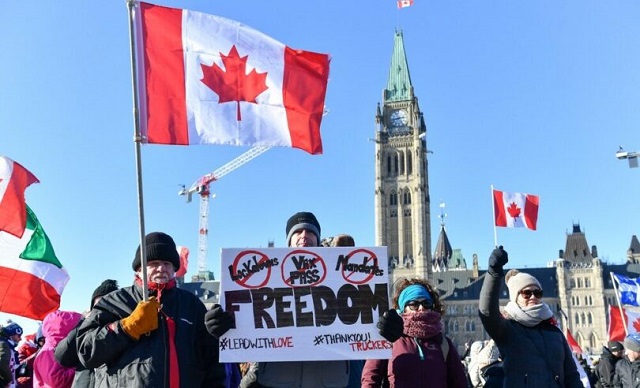
 COVID-192 days ago
COVID-192 days agoTrudeau government only sought legal advice after Emergencies Act was invoked, records indicate
-

 Brownstone Institute2 days ago
Brownstone Institute2 days agoThe WHO’s Proposed Pandemic Agreements Worsen Public Health
 For 200 years Rupert’s Land (its flag shown on top left) along with the Northwest and Northeast Territories were the exclusive commercial domain of the Hudson’s Bay Company (HBC), granted by the British Crown; Great Britian officially transferred these vast lands to the Crown in Right of Canada in 1870. (Source of map:
For 200 years Rupert’s Land (its flag shown on top left) along with the Northwest and Northeast Territories were the exclusive commercial domain of the Hudson’s Bay Company (HBC), granted by the British Crown; Great Britian officially transferred these vast lands to the Crown in Right of Canada in 1870. (Source of map:  Obscure but legally important: Canada is often said to have “purchased” Rupert’s Land from the Hudson’s Bay Company, but Canada did not actually pay for the land, only for the company’s capital improvements such as Lower Fort Garry in the Rural Municipality of St. Andrews (aka the Stone Fort, top), Fort Edmonton (middle), depicted here after construction of Alberta’s Legislative Assembly building, and the Hudson’s Bay Brigade Trail (bottom). (Sources of images: (top)
Obscure but legally important: Canada is often said to have “purchased” Rupert’s Land from the Hudson’s Bay Company, but Canada did not actually pay for the land, only for the company’s capital improvements such as Lower Fort Garry in the Rural Municipality of St. Andrews (aka the Stone Fort, top), Fort Edmonton (middle), depicted here after construction of Alberta’s Legislative Assembly building, and the Hudson’s Bay Brigade Trail (bottom). (Sources of images: (top)  “Enter the Union on an equal basis with existing states”: In contrast to Canada, the U.S. Northwest Ordinance of 1787 provided a formal and transparent mechanism by which newly settled territories could graduate to statehood if they met certain conditions – gaining the same rights and privileges as the original 13 states.
“Enter the Union on an equal basis with existing states”: In contrast to Canada, the U.S. Northwest Ordinance of 1787 provided a formal and transparent mechanism by which newly settled territories could graduate to statehood if they met certain conditions – gaining the same rights and privileges as the original 13 states. “Our lives our fortunes and our sacred honour”: Métis leaders Louis Riel (top left) and John Bruce (top right) saw the 1870 transfer of Rubert’s Land to Canada as an act of “abandonment” by the British Crown; to protect the interests of the Red River Settlement (bottom), they “refus[ed] to recognise the authority of Canada.” (Sources: (top left photo) Library and Archives Canada, C-018082; (top right photo)
“Our lives our fortunes and our sacred honour”: Métis leaders Louis Riel (top left) and John Bruce (top right) saw the 1870 transfer of Rubert’s Land to Canada as an act of “abandonment” by the British Crown; to protect the interests of the Red River Settlement (bottom), they “refus[ed] to recognise the authority of Canada.” (Sources: (top left photo) Library and Archives Canada, C-018082; (top right photo)  “Provinces in the Roman sense”: According to political scientist James Mallory, Canada’s Prairie provinces were akin to “provinciae” in ancient Rome – conquered lands whose inhabitants were not citizens and who existed to serve the interests of the Imperial Capital and the Italian heartland. Shown, the fall of Macedonia in 168 BC depicted in The Triumph of Aemilius Paulus by Carle Vernet, 1789. (Source of painting:
“Provinces in the Roman sense”: According to political scientist James Mallory, Canada’s Prairie provinces were akin to “provinciae” in ancient Rome – conquered lands whose inhabitants were not citizens and who existed to serve the interests of the Imperial Capital and the Italian heartland. Shown, the fall of Macedonia in 168 BC depicted in The Triumph of Aemilius Paulus by Carle Vernet, 1789. (Source of painting:  In 1905 the Dominion of Canada carved the new provinces of Alberta and Saskatchewan out of portions of the Northwest Territories; the newcomers were treated as distinctly second-class in comparison to the original provinces, among other things only gaining full control over their lands and natural resources in 1930. (Sources of photos (clockwise, starting top-left):
In 1905 the Dominion of Canada carved the new provinces of Alberta and Saskatchewan out of portions of the Northwest Territories; the newcomers were treated as distinctly second-class in comparison to the original provinces, among other things only gaining full control over their lands and natural resources in 1930. (Sources of photos (clockwise, starting top-left):  The Prairie provinces continued to be subjected to destructive Laurentian policies throughout the 20th century, such as prolongation of the Canadian Wheat Board, official bilingualism and the National Energy Program, implemented by Pierre Trudeau in 1981 (shown on bottom left, to the right of Alberta premier Peter Lougheed in the centre). Depicted on bottom right, oil sands facility at Mildred Lake. (Sources of photos: (top left) Canadian Government Motion Picture Bureau/Library and Archives Canada/C-064834; (bottom left) The Canadian Press/Dave Buston; (bottom right)
The Prairie provinces continued to be subjected to destructive Laurentian policies throughout the 20th century, such as prolongation of the Canadian Wheat Board, official bilingualism and the National Energy Program, implemented by Pierre Trudeau in 1981 (shown on bottom left, to the right of Alberta premier Peter Lougheed in the centre). Depicted on bottom right, oil sands facility at Mildred Lake. (Sources of photos: (top left) Canadian Government Motion Picture Bureau/Library and Archives Canada/C-064834; (bottom left) The Canadian Press/Dave Buston; (bottom right)  “It’s not like Ottawa is a national government”: The Alberta Sovereignty within a United Canada Act, passed in late 2022 by the UCP government of Premier Danielle Smith, pictured, aims to strengthen the province’s ability to limit unconstitutional intrusions of federal policy and law into areas of provincial jurisdiction, thereby reaffirming that Canada is a federal state. (Source of photo: The Canadian Press/Jason Franson)
“It’s not like Ottawa is a national government”: The Alberta Sovereignty within a United Canada Act, passed in late 2022 by the UCP government of Premier Danielle Smith, pictured, aims to strengthen the province’s ability to limit unconstitutional intrusions of federal policy and law into areas of provincial jurisdiction, thereby reaffirming that Canada is a federal state. (Source of photo: The Canadian Press/Jason Franson) Although attacked by critics, Alberta’s Sovereignty Act has received strong popular support for challenging the Justin Trudeau government’s constant intrusions into areas of provincial constitutional jurisdiction; the author points out that the Constitution does not require provinces to enforce federal laws, and that the Supreme Court of Canada has confirmed this. Shown, supporters of the Sovereignty Act outside the Alberta legislature, December 2022. (Source of photo:
Although attacked by critics, Alberta’s Sovereignty Act has received strong popular support for challenging the Justin Trudeau government’s constant intrusions into areas of provincial constitutional jurisdiction; the author points out that the Constitution does not require provinces to enforce federal laws, and that the Supreme Court of Canada has confirmed this. Shown, supporters of the Sovereignty Act outside the Alberta legislature, December 2022. (Source of photo:  “Clear majority on a clear question”: Two years after the 1998 Quebec Secession Reference case before the Supreme Court of Canada, the Liberal government of Jean Chrétien (on bottom, leaning forward) introduced the Clarity Act, establishing the conditions under which Canadian provinces may be allowed to begin the process of secession. The author considers this another act violating the concept of federalism, with Ottawa unilaterally calling the shots and placing provinces in a subordinate position. (Sources of photos: (top)
“Clear majority on a clear question”: Two years after the 1998 Quebec Secession Reference case before the Supreme Court of Canada, the Liberal government of Jean Chrétien (on bottom, leaning forward) introduced the Clarity Act, establishing the conditions under which Canadian provinces may be allowed to begin the process of secession. The author considers this another act violating the concept of federalism, with Ottawa unilaterally calling the shots and placing provinces in a subordinate position. (Sources of photos: (top) 

